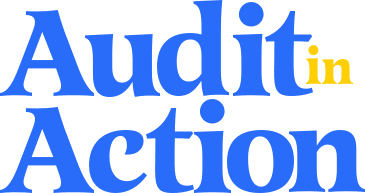The Role of Technology in the Modern Audit
Technology has disrupted almost every industry, from healthcare to agriculture. Within the audit profession, technology has transformed the way the traditional audit is done, streamlining the process for auditors while enhancing audit quality.
Evolution of the Audit: Technology
Technology has had a significant impact on the evolution of the audit.
“When I think about how technology has impacted the audit profession it makes me go back to when I was a young auditor and I used to imagine what it must be like to try to do an audit without excel or a computer for that matter,” said Brian Jackson, Associate Director – Digital Audit Lead at Crowe. “It was very hard to imagine, and I thought about all the lost hours of working with a calculator and paper. In today’s world, we’re in a place where we’re going to see technology and data analytics eat the traditional audit one bite at a time.”
Historically, information was stored on paper and a human auditor would manually review a relatively small sample of that information to detect errors. As computers came along, that same basic task became digitized and much easier. But now, as new technologies come online, we’re seeing a evolution.
“I remember as staff physically printing hundreds of confirmation letters – letters we send to third-parties to confirm financial information included in audited statements – sealing them in envelopes and taking them to the post-office to mail them,” said Yuri Zwick, Professional Practice Fellow at the CAQ. “As we sit here today, I think those days are long gone and the audit profession has transformed into a technology driven business.”
Game-Changing Technology Solutions
A recent study found that more than 8-in-10 (82%) of auditors used data analytics or other emerging technologies in their audits.
According to Bill Eisig, Managing Partner, Assurance at BDO, auditors are using technology in multiple capacities, including:
- Data analytics. “Usage allows the auditor to focus on exceptions, or deviations from expectations, which improves the precision and the focus,” said Eisig.
- Automation tools. Eisig notes, “One great example is having the auditor expand beyond just sampling subsets of relevant data to large or more complete sets to make precise decisions.”
- Machine learning. Eisig added, “We’ve been able to use this technology to effectively evaluate documents for specific information, allowing auditors to focus on application and execution.”
Firms are also utilizing specific technology platforms.
“KPMG Clara is our foundational technology platform,” said Lou Trebino, Audit Chief Technology Officer at KPMG. “It’s a platform that creates a streamlined client experience, improving coordination with the team that delivers the audit and a more consistent audit execution. It’s the single place for our clients to exchange information with us and to be able to monitor the progress of the audit, obtain audit insights through data analytics and visualization and so much more through the lifecycle of each audit.”
And firms are not only investing in new platforms; they’re also investing in their people.
“When we think about technology, we approach it in two ways,” said Kazi Islam, Assurance Strategy Leader at PwC US. “One is the enterprise level technology at scale. What can we do to enable large-scale technology adoption and implementation? But also, how can we focus on the digital innovation of our people? If you democratize information and you equip every single one of your people to be data savvy, they can then bring a different level of innovation and application of technology to the audit process.”
Fighting Fraud with Technology
Technology also plays an important role in auditors’ ability to deter and detect fraud.
“Public company auditors play an important role in identifying and detecting fraud in financial statements,” said Zwick. “We continue to see that the audit profession is focused on continuous improvement in this area, particularly through the use of new audit technology and innovative techniques. It is important to remember that to really fight fraud it takes a collective effort among public company auditors, company management and audit committees.”
Technology in a Time of Crisis: COVID-19
While many audit firms were already piloting technology to enable remote work, the coronavirus pandemic significantly shifted auditors day-to-day use of technology, resulting in an increased use of – and reliance on – technology.
“During the pandemic, KPMG launched smart glasses for virtual inventory observations,” said Trebino. We’d been working on pilots ahead of the pandemic, but this enabled us to really accelerate deployment and adoption.”
“COVID-19 was a crisis and there’s a saying that crisis is an accelerator to change,” said Jackson. “I really believe that that’s what COVID-19 has done to the audit profession. While we were already invested in virtual tools to allow us to work remotely, this really accelerated our need to get good at doing that. One of our strategies was to set up virtual war rooms, allowing our teams to collaborate as if they were still together and talk across the table.”
Learn more about emerging audit technologies here. And to learn more about the role technology plays in fighting fraud, visit the Anti-Fraud Collaboration.

